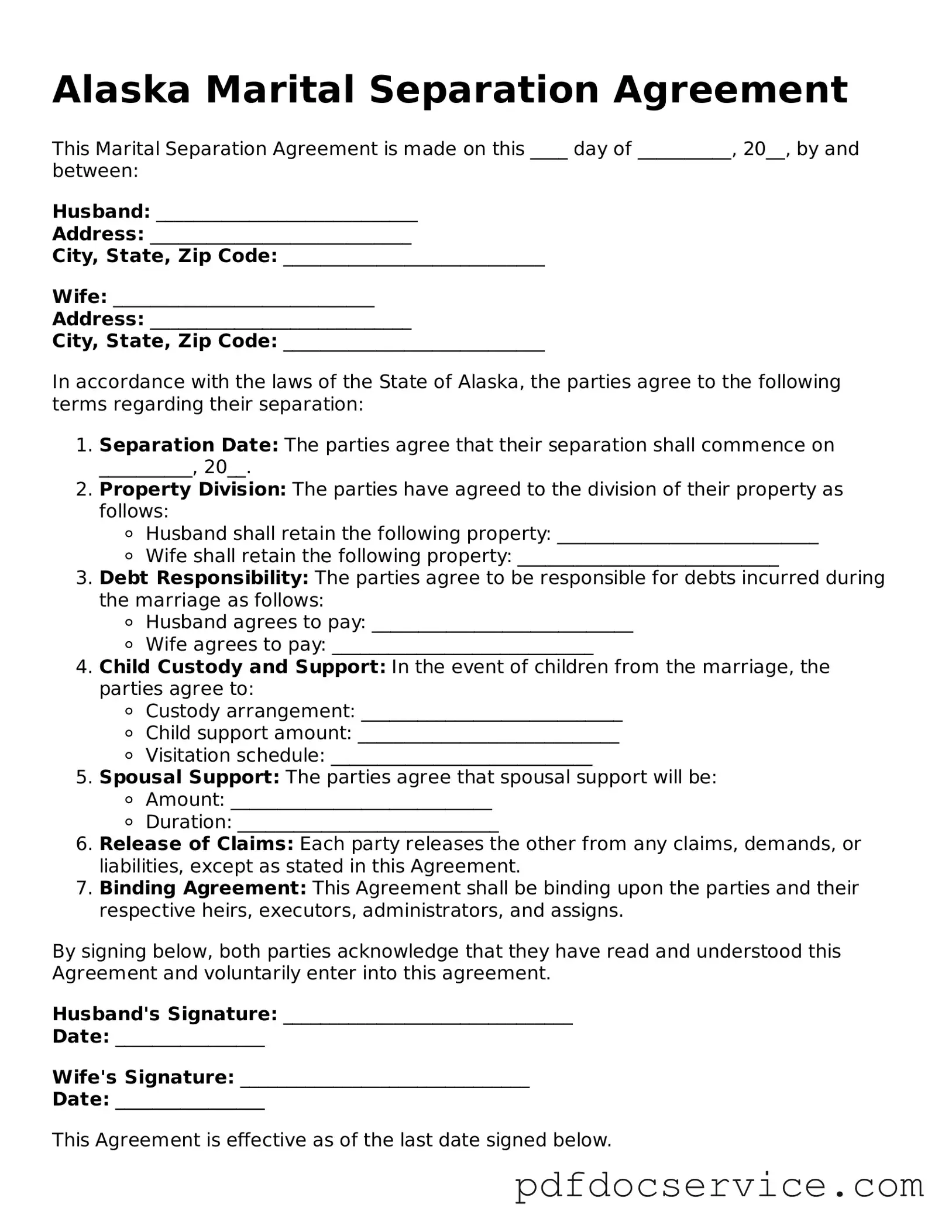The Alaska Marital Separation Agreement is a crucial document for couples who wish to formalize their separation while addressing key aspects of their marital relationship. This agreement outlines the rights and responsibilities of each spouse during the separation period, covering essential topics such as property division, debt allocation, child custody, and support arrangements. By clearly defining these terms, the agreement helps to minimize potential conflicts and misunderstandings between the parties involved. It serves as a framework for the couple to navigate their separation amicably, ensuring that both parties have a clear understanding of their obligations and entitlements. Furthermore, the document can be beneficial if the couple later decides to pursue divorce, as it can provide a basis for negotiations and facilitate a smoother legal process. Overall, the Alaska Marital Separation Agreement plays a significant role in helping individuals manage the complexities of separation in a structured manner.
